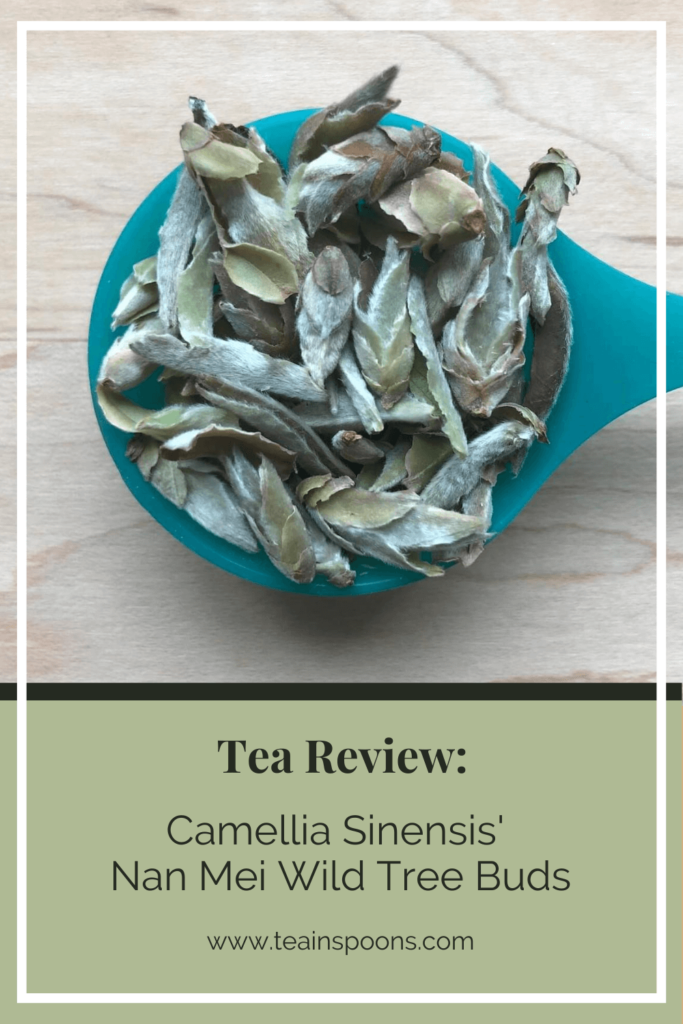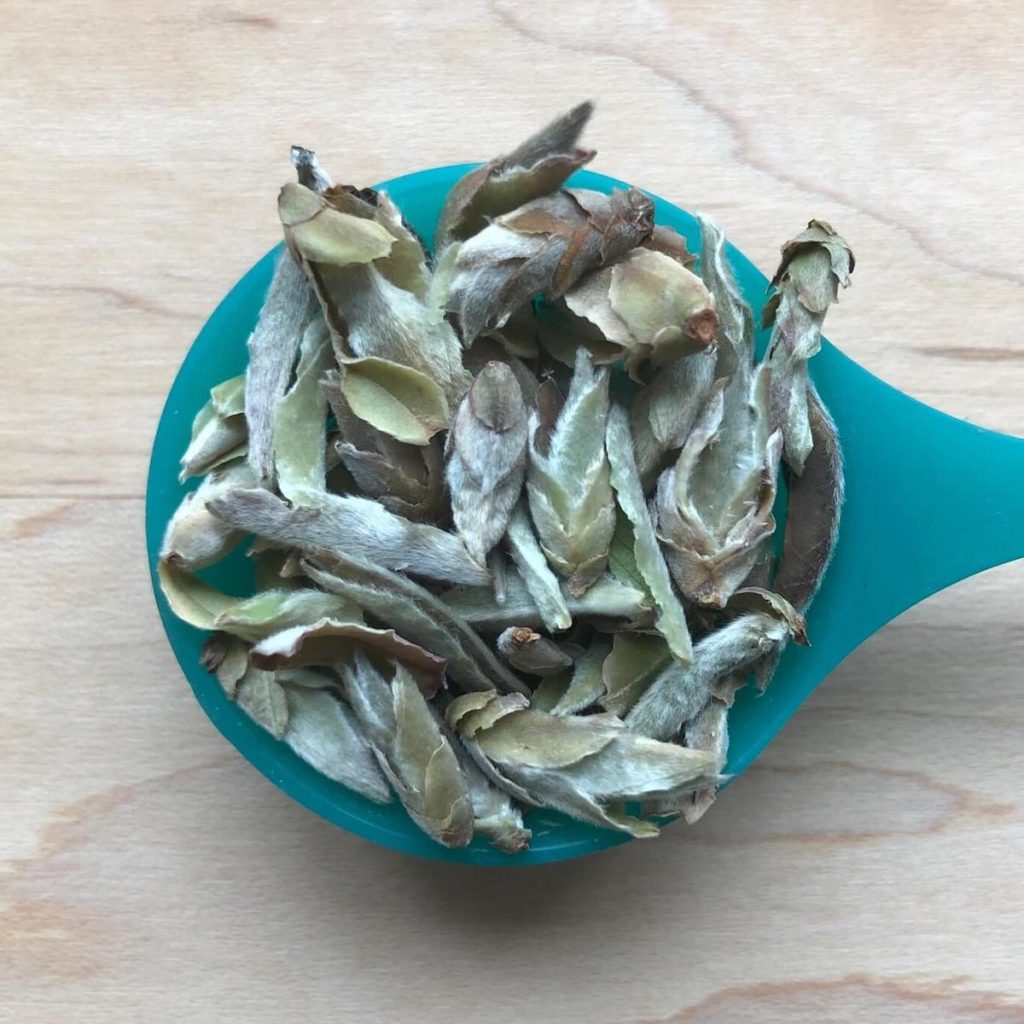
Many years ago, I tasted this white tea on a trip to the United States! So, when I came across it on Camellia Sinensis Teahouse’s website, I was curious to try it again.
Description: “Herbal (sage) and citrus (clementine) scents emanate from the infusion, its creamy and sweet liquor are spicy, characteristic of wild teas.”
Instructions: Gaiwan – 75°C/167°F | 150 ml | 5 grams | Cup – 75°C/167°F | 250 ml | 3 grams | 5 – 7 mintues
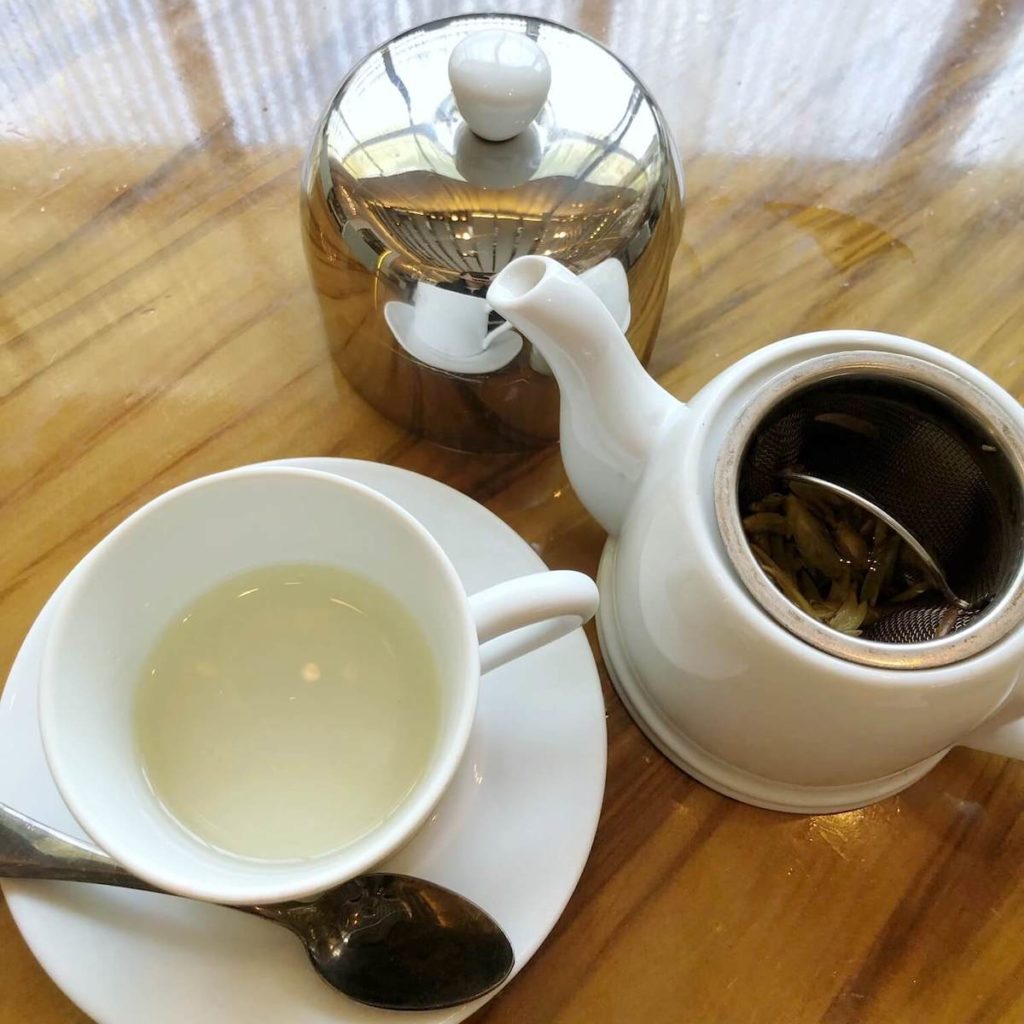
Review: I originally tried this tea when I was at the Baccarat Hotel on my trip to New York City. I met up with a handful of tea friends and drank tea all around the town! I distinctly remembered this tea as the large plump buds were unique and looked like fuzzy pine cones or fanning plant leaves. While at the hotel, I had it in a small teapot. This time, I brewed it in a gaiwan and a cup. The wild tree picked tan and light olive green colour dry buds with reddish tips that smelled of citrus, hay, and herbs.
Gaiwan
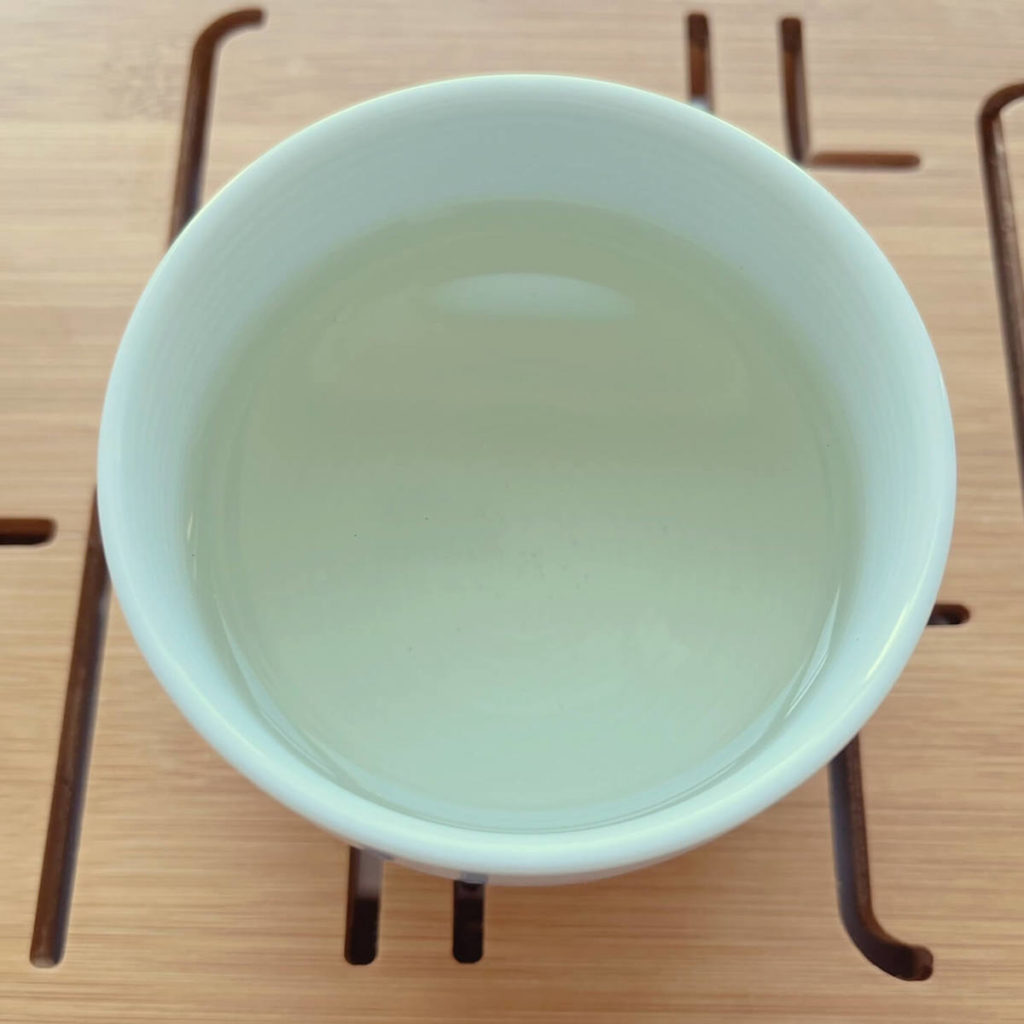
Pre-warmed gaiwan: After warming the giawan with hot water and adding the white tea buds, a mixture of smells ranging from lemongrass, citrus, fresh cut grass, and pine needles emanated from the tea buds.
Infusion 1 (45 seconds): The liquor was pale, almost clear, with a pine and mossy smell. It tasted sweet and of pine, spinach, and steamed asparagus.
Infusion 2 (35 seconds): The slightly darker yellow colour liquor had a damp forest, pine/woody, citrus, and fruity taste with dryness at the back of the throat.
Infusion 3 (55 seconds): After almost a minute, the taste of the dark yellow liquor lingered in the back throat and was earthy, woody, hay, and sweet which is what I generally expect from a white tea.
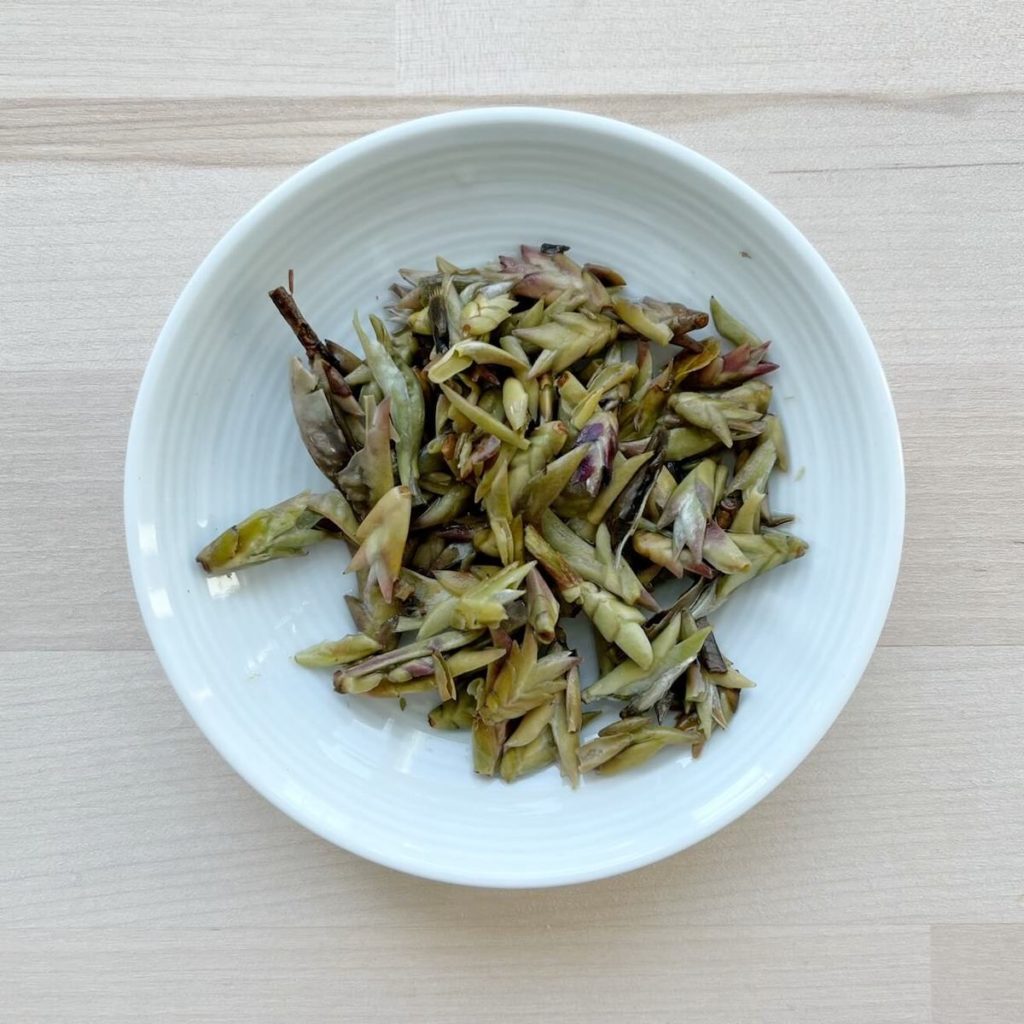
Wet leaves: The wet leaves looked like the dry leaves with the reddish tips more pronounced. Despite not tasting any roasted notes, it smelled roasted with a moss undertone smell like a forest floor after a rainstorm.
Cup
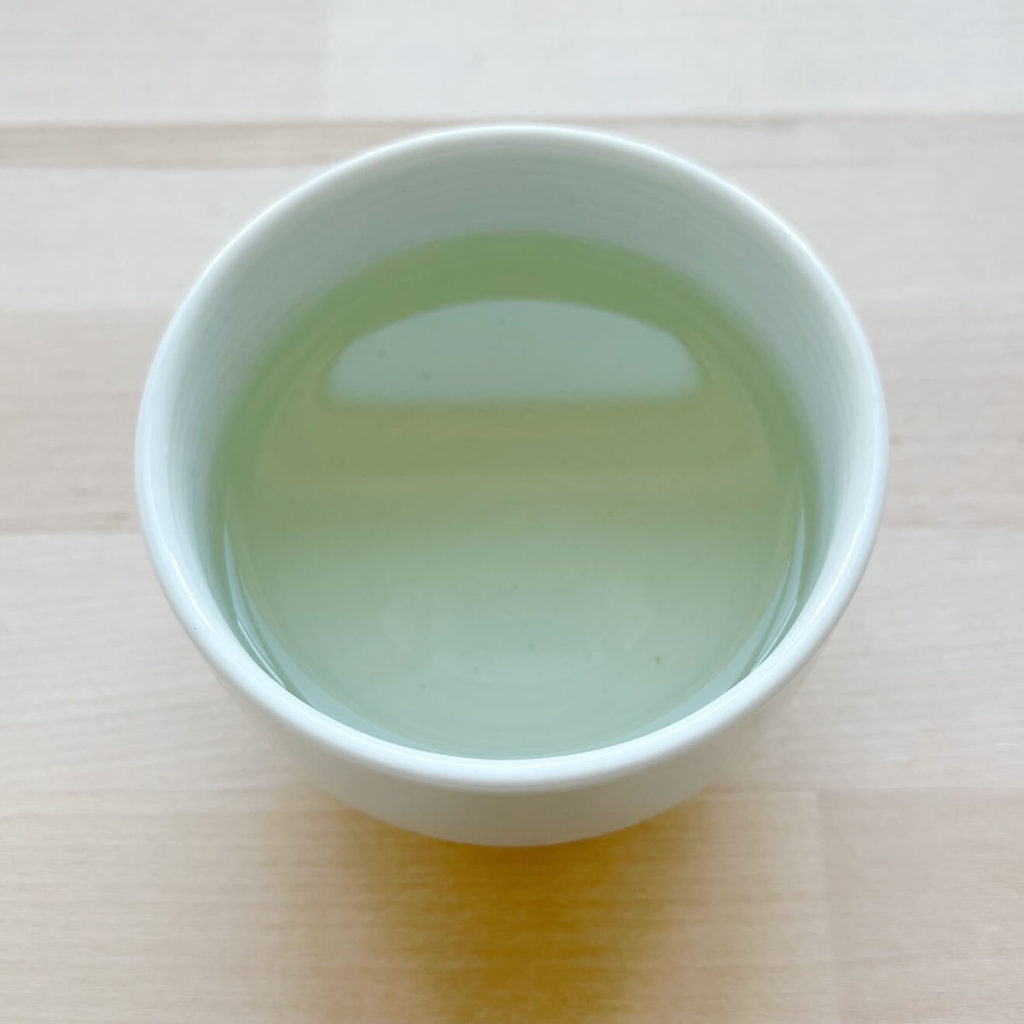
After removing the lid from the cup following a 6 minute infusion, the liquor had a lemony, wildflower, and fresh laundry aroma. Like using the gaiwan method, the liquor was also a pale yellow. Like how the liquor smelled, the taste also carried a lemon note with flavours of sweet wild honey, hay, and herbal/sage. Despite being on the delicate side, I could still taste it in the back of my throat and it had a strong staying power.
When cooled, it was less sweet and was more herbal, grassy and peppery. Regardless of the longer steep time, the wet leaves still had citrus, hay, and herbal smell and reminded me of the outdoors. The buds looked more like small flowers than the white tea buds I am accustomed to.
Overall Thoughts
I am glad I rediscovered this tea again! The buds are lovely to look at and the tea itself had a range of flavours that I normally do not expect from a white tea. I enjoyed infusing the buds with a gaiwan as it showed a broader scope of flavours. It also reminded me of my time in New York and hanging out with my tea friends, so bonus! This white tea is worth trying if you enjoy white teas or want to try tea picked from wild trees (3.5/5 rating).
- Type: White tea
- Origin: Nan Mei valley, Lincang, Yunnan, China
- Caffeine: Caffeine-free
- Ingredients: White tea buds
- Company: Camellia Sinensis
The question of the post: What is the coolest looking white tea you’ve tried?
Liked this review of Camellia Sinensis’ Nan Mei Wild Tree Buds? Pin it!
